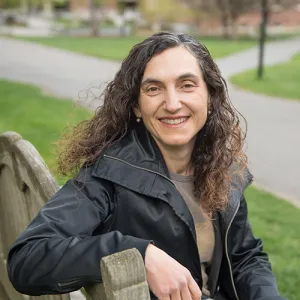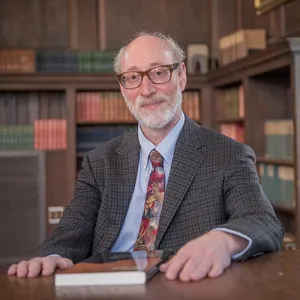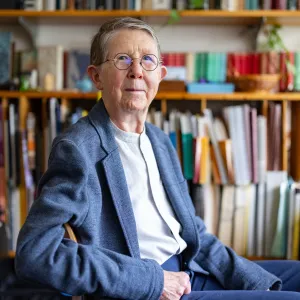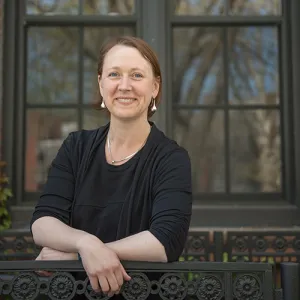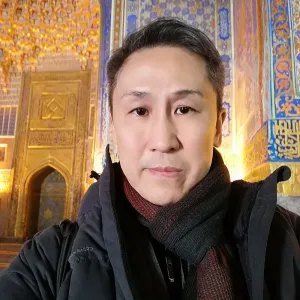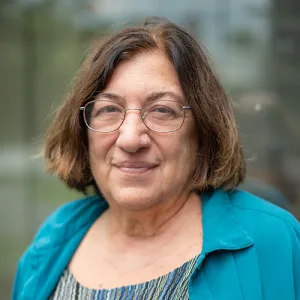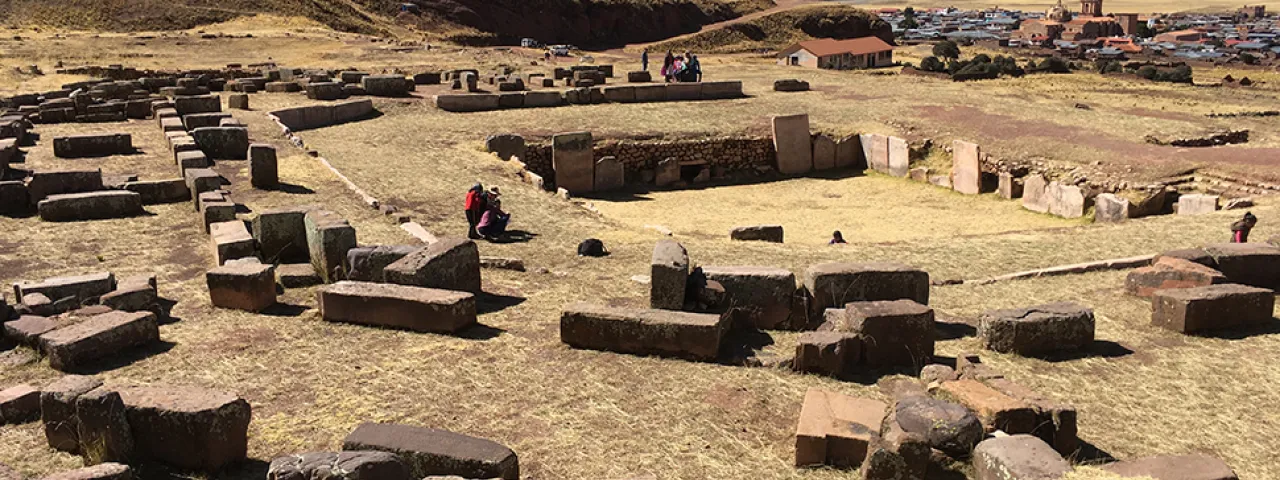
Archaeology
The grand and distinguished tradition of archaeology at Smith—based on the study of ancient Greece, Rome and the Near East—gained a broader geographical multidisciplinary focus when the archaeology minor was introduced in 1984. Built on interdepartmental collaboration, the archaeology program works in cooperation with and is complemented by the anthropological and archaeological program at the University of Massachusetts. In addition to students who enroll in ANT 135 Introduction to Archaeology, and those who declare a minor in archaeology, students pursue archaeology studies through various avenues. Most student experiences occur during the summer in addition to the regular academic program.
Requirements & Courses
Archaeology Minor
Requirements
Six courses
- ANT 135/ ARC 135
- Five additional courses chosen in consultation with the student’s minor adviser. (If the archaeological project, below, carries academic credit, only four additional courses are required.) We encourage students to choose courses from at least two different departments, and to study both Old World and New World materials. A list of approved courses is available on the program website at smith.edu/academics/archaeology.
- A project in which the student works outside of a conventional classroom but under appropriate supervision on an archaeological question approved in advance by the minor adviser. The project may be done in a variety of ways and places; for example, it may be excavation (fieldwork), or work in another aspect of archaeology in a museum or laboratory, or in an area closely related to archaeology such as geology or computer science. Students are encouraged to propose projects related to their special interests. This project may be, but does not need to be, one for which the student receives academic credit. If the project is an extensive one for which academic credit is approved by the registrar and the advisory committee, it may count as one of the six courses required for this minor.
Minor Requirement Details
- No more than two courses counting toward the student’s major program may be counted toward the archaeology minor.
- Only four credits of a language course may be counted toward the minor.
Courses
ARC 400 Special Studies (2-4 Credits)
For junior and senior minors. Instructor permission required.
Fall, Spring
Crosslisted Courses
ANT 135/ ARC 135 Introduction to Archaeology (4 Credits)
Offered as ANT 135 and ARC 135. This course studies past cultures and societies through their material remains and explores how archaeologists use different field methods, analytical techniques and theoretical approaches to investigate, reconstruct and learn from the past. Data from settlement surveys, site excavations and artifact analysis are used to address economic, social, political and ideological questions across time and space. This course is taught from an anthropological perspective, exploring key transitions in human prehistory, including the origins of food production, social inequality and state-level societies across the globe. Relevance of archaeological practice in modern political, economic and social contexts is explored. Restrictions: First-years and sophomores only. Enrollment limited to 30. Natural Science; Social Science
Fall
ANT 221 Global Archaeology: Method, Theory, and Practice (4 Credits)
This course features case studies from across the globe to explore the diversity of theoretical approaches to studying the past, the field, and lab methods used to analyze material culture, and the ethical considerations of archaeological practice. Students develop a solid foundation for evaluating and contextualizing archaeological research using insights from the humanities, social sciences, and STEM fields. Discussions of global archaeological practice address the roles and responsibilities of archaeologists in global heritage management, museum development, collaborative research with stakeholder groups, and public outreach.
Fall, Spring, Alternate Years
ANT 226 Archaeology of Food (4 Credits)
This course explores (1) how and why humans across the globe began to domesticate plant and animal resources approximately 10,000 years ago, and (2) new directions in the archaeology of food across time and space. The first part of the semester focuses on the types of archaeological data and analytical methods used to understand the agricultural revolution. Case studies from both centers and noncenters of domestication are used to investigate the biological, economic and social implications of changing foodways. During the remainder of the semester, emphasis is placed on exploring a number of food-related topics within archaeology, such as the relationship between agriculture and sedentism, food and gender, the politics of feasting, and methods for integrating archaeological and ethnographic approaches to the study of food across the globe. Enrollment limited to 30. Social Science
Fall, Spring, Variable
ANT 237 Monuments, Materials and Models: The Archaeology of South America (4 Credits)
This course offers an overview of the archaeology of South America, from the earliest traces of human occupation over 10,000 years ago to the material culture of the present. The course focuses on how archaeologists use data collected during settlement surveys, site excavations and artifact analysis to reconstruct households and foodways, social and political organization, and ritual and identity over the millennia. Discussions also include the relevance of the past in contemporary indigenous rights movements, heritage management strategies and nationalist projects. Natural Science; Social Science
Fall, Spring, Alternate Years
ANT 240 Museum Anthropology (4 Credits)
Museums are dynamic sites of collecting, conserving, analyzing, interpreting, and displaying cultural objects, both ancient and contemporary. This course uses insights from cultural anthropology, archaeology, and heritage studies to explore the history of museums, their diverse formats and audiences, the ethical and legal frameworks guiding their operations, and ongoing debates about their roles as sites of cultural contact, conflict, reconciliation, and restitution. Students gain hands-on experience working with Five College museum collections–primarily archaeological materials from Latin America–and visit other area museums during the semester. Enrollment limited to 30. Social Science
Fall, Alternate Years
ANT 347pp Seminar: Topics in Anthropology-Pondering Pottery (4 Credits)
Pottery, both fragments and whole vessels, is ubiquitous in the archaeological record and provides insights into technological choices, shifting styles, food-related practices, economic relationships and many other aspects of past lifeways. This course focuses on how archaeologists collect, analyze, interpret and present information about pottery from diverse contexts across the globe. Students have the opportunity to conduct independent research on fragmentary and complete pottery vessels, and they also utilize ethnographic and historical studies of potters to expand the understanding of these practices today. Restrictions: Juniors and seniors only. Enrollment limited to 12. Instructor permission required. Social Science
Fall, Spring, Variable
ARH 204 Inkas, Aztecs and Their Ancestors (4 Credits)
What is antiquity in the Americas? To explore this question, this class focuses upon visual cultures and urban settings from across the Americas. Emphasis rests upon recent research especially about the Inka, the Aztec and their ancestors, but the course also studies the current debates in art history and archaeology. Discussions include: sacrifice and rulership, representations of human and deified beings, the symbolic and economic meanings of materials, and the ethics of excavation and museum display. Case studies include architectural complexes, textiles, ceramics and sculpted works from Peru, Mexico, the Caribbean and the U.S. Southwest. Counts for ARU. Arts; Historical Studies
Fall, Spring, Variable
ARH 207 Translating New Worlds (4 Credits)
This course asks how travel to and through the New World was imagined, described and lived by Indigenous residents as well as those who came to the Americas from across the Atlantic and the Pacific oceans. The focus rests upon the ways in which geographies, anthropologies, material objects, and pictorial and written records shaped colonial ambitions and experiences. Among the objects the class considers: books and painted images, dyes and metals, feathers and urban buildings. Case studies are drawn from across the Americas, including Canada, Mexico, Ecuador, Haiti and the United States. The class also discusses contemporary cultural practices that seek to explain, interpret and redress colonial encounters and settlements in the Americas. Group A, Counts for ARU. Arts; Historical Studies
Fall, Spring, Variable
ARH 212 Ancient Cities and Sanctuaries (4 Credits)
This course explores many different aspects of life in the cities and sanctuaries of the ancient Near East, Egypt, Greece, Etruria and Rome. Recurrent themes include urbanism, landscapes and patterns of worship, including initiation, sacrifice and pilgrimage. The class probes how modern notions of the secular and the sacred influence interpretation and how sometimes the seemingly most anomalous features of the worship of Isis or of the juxtaposition of commercial and domestic space within a city can potentially prove to be the most revealing about life in another place and time. Counts for ARU. Arts; Historical Studies
Fall, Spring, Variable
ARH 216 The Art and Architecture of the Ancient Roman World (4 Credits)
From North Africa to Gaul, from the Pillars of Hercules (Straits of Gibraltar) to Asia Minor, the interrelationships of art and power in the visual culture of the ethnically diverse Roman empire, from the first century B.C.E. through the fourth century C.E., are the subject of study. The class also examines works of art from later periods as well as literature and film that structure the perception of the Roman world. Counts for ARU. Arts; Historical Studies
Fall, Spring, Variable
ARH 217/ CLS 217 Greek Art and Archaeology (4 Credits)
Offered as CLS 217 and ARH 217. This course is a contextual examination of the art and architecture of Ancient Greece, from the end of the Bronze Age through the domination of Greece by Rome (ca. 1100-168 BCE) and handles an array of settlements, cemeteries and ritual sites. It tracks the development of the Greek city-state and the increasing power of the Greeks in the Mediterranean, culminating in the major diaspora of Greek culture accompanying the campaigns of Alexander the Great and his followers. The course takes a broadly chronological approach, and the question of a unified Greek culture is stressed. Continuing archaeological work is considered. Arts; Historical Studies
Fall, Spring, Alternate Years
ARH 285pm Topics: Great Cities-Pompeii (4 Credits)
A consideration of the ancient city: architecture, painting, sculpture and objects of everyday life. Women and freed people as patrons of the arts are emphasized. The impact of the rediscovery of Pompeii and its role as a source of inspiration in 18th-, 19th-, and 20th-century art is discussed. No prerequisite. Arts; Historical Studies
Fall, Spring, Variable
ARH 290ce Colloquium: Topics in Art History-China in Expansion: Early Chinese Art & Material Culture (20th century BCE-220 CE) (4 Credits)
During the formative periods when the local and global forces simultaneously took actions in shaping Chinese civilization, the functions of images and objects, the approaches to things and the discourses around art underwent significant shifts, not only responding to but also mapping out the "Chinese-ness" in visual and material culture. This course of early Chinese art investigates diverse media bronze vessels, sculptures, murals, textiles, architecture and other visual and material forms in relation to political and military conquest, cross-cultural exchange, the dissemination of ordinary practices and the formation of identities. Key terms and issues for the course include expansion, connection and materiality. Counts for ARU. Restrictions: ARH 290 may be taken for credit a total of 4 times with different topics. Enrollment limited to 20. Arts; Historical Studies
Fall, Spring, Alternate Years
ARH 290ss Colloquium: Topics in Art History-Swords and Scandals (4 Credits)
Since the beginning of cinema, the decadence of the ancient Romans has been a subject of fascination. Starting with HBO's Rome (2005-2007) and Ridley Scott's Gladiator (2000), this course explores the multiple sources of the visual tropes used to construct this universe and seeks to analyze it in aesthetic, historical and ideological terms. Their twentieth-century counterparts from films of the silent era to Hollywood epics like Spartacus (1960) and Cleopatra (1963), as well as cult classics like Caligula (1979), are scrutinized in order to gain an understanding of how Romans function cinematically as cultural signs in varying historical contexts. Restrictions: ARH 290 may be taken for credit a total of 4 times with different topics. Enrollment limited to 20. Arts; Historical Studies
Fall, Spring, Variable
CLS 218 Hellenistic Art and Archaeology (4 Credits)
This course examines the art, architecture and material culture of the Hellenistic period, spanning the years from 323 to 31 BCE and representing one of the most exciting and dynamic eras of Greek history. Beginning with the expansionist campaign of Alexander the Great and ending with the conquests of the future emperor Augustus, it is a time of fast-paced change, experimentation and diversity. In addition to examining the archaeology of this period, the course explores ideas about the accessibility of archaeological material and how this may be facilitated through digital collections and virtual reconstructions. Arts; Historical Studies
Fall, Spring, Alternate Years
CLS 227 Classical Mythology (4 Credits)
The principal myths as they appear in Greek and Roman literature, seen against the background of ancient culture and religion. Focus on creation myths, the structure and function of the Olympian pantheon, the Troy cycle and artistic paradigms of the hero. Some attention to modern retellings and artistic representations of ancient myths. Arts; Literature
Fall, Spring, Alternate Years
CLS 237 Artifacts of Daily Life in the Ancient Mediterranean (4 Credits)
This course uses the artifacts of the Van Buren Antiquities Collection as a starting point for investigating the daily life of the Greek and Roman worlds. In particular, students select and research an object or objects for which to develop an "object biography," through which the people who produced, used, and re-used these objects might be accessed. Additional attention is given to the place of objects in archaeological practice and narratives. Enrollment limited to 10. Social Science; Historical Studies
Fall, Spring, Alternate Years
CLS 238 The Age of Heroes: Archaeology of the Eastern Mediterranean Bronze Age (4 Credits)
The Mediterranean Bronze Age is often associated with mythological events like the Trojan War. But how did the people of the Bronze Age actually live? This course surveys the archaeology of the Eastern Mediterranean Bronze Age, including Egypt and the Aegean, among others, from 3000 to 1100 BCE. The course explores not only the pyramids and palaces of the period, but also the evidence for day-to-day living, from crafts production to religion. The class also examines how these cultures interacted and the Mediterranean networks that both allowed them to flourish and led to their collapse. Enrollment limited to 40. Arts; Historical Studies
Fall, Spring, Alternate Years
FYS 147 Power Lunch: The Archaeology of Feasting (4 Credits)
Throughout history, food and dining have formed some of the most fundamental expressions of cultural identity--in a very real sense, people are what they eat, and how they eat. This cross-cultural examination of the topic begins by exploring the various roles that feasting played in the world of the ancient Mediterranean, particularly the cultures of Greece and Rome. The class examines comparative material from contemporary societies. How does food define and create culture? In what ways does dining express or reinforce inequalities? These and other questions are tackled through the use of primary literature, anthropological studies and archaeological material, along with hands-on approaches. Restrictions: First years only; students are limited to one first-year seminar. Enrollment limited to 16. WI Social Science; Historical Studies
Fall, Spring, Variable
GEO 232 Sedimentary Geology (5 Credits)
A project-oriented study of the processes and products of sediment formation, transport, deposition and lithification. Modern sediments and depositional environments of the Massachusetts coast are examined and compared with ancient sedimentary rocks of the Connecticut River Valley and eastern New York. Field and laboratory analyses focus on the description and classification of sedimentary rocks, and on the interpretation of their origin. The results provide unique insights into the geologic history of eastern North America. Two weekend field trips. Prerequisites: GEO 101 and GEO 102; GEO 108; or GEO 102 with any other GEO 100-level course. GEO 102 can be taken concurrently. Enrollment limited to 22. Natural Science
Fall
HST 101 The Silk Road and Premodern Eurasia (4 Credits)
An introduction to major developments and interactions among people in Europe and Asia before modernity. The Silk Roads, long distance networks that allowed people, goods, technology, religious beliefs and other ideas to travel between China, India and Rome/Mediterranean, and the many points in between, developed against the backdrop of the rise and fall of steppe nomadic empires in Inner Asia. We examine these as interrelated phenomena that shaped Eurasian encounters to the rise of the world-conquering Mongols and the journey of Marco Polo. Topics include: horses, Silk and Steppe routes, Scythians and Huns, Han China and Rome, Byzantium, Buddhism, Christianity and other universal religions, Arabs and the rise of Islam, Turks, Mongol Empire, and medieval European trade, geography and travel. Enrollment limited to 40. Historical Studies
Spring
HST 102 Ancient Greece (4 Credits)
A survey of the history of the ancient Greeks during their most formative period, from the end of the Bronze Age to the end of the Classical Age. The class examines the relationship between mythology, archaeology and historical memory; the evolution of the city-state; games and oracles; colonization, warfare and tyranny; city-states Sparta and Athens and their respective pursuits of social justice; wars with Persia; cultural interactions with non-Greeks; Athens' naval empire and its invention of Democracy; family and women; traditional religions and forms of new wisdom; and the trial and death of Socrates in 399 B.C. Enrollment limited to 40. Historical Studies
Fall, Spring, Variable
HST 103 Alexander the Great and the Hellenistic World (4 Credits)
The career and conquests of Alexander the Great (d. 323 B.C.) wrought far-reaching consequences for many in Europe, Asia and Africa. In the ensuing Hellenistic (Greek-oriented) commonwealth that spanned the Mediterranean, Middle East, Central Asia and India, Greco-Macedonians interacted with Egyptians, Babylonians, Jews, Iranians, Indians and Romans in ways that galvanized ideas and institutions such as the classical city as ideal community, cult of divine kings and queens, "fusion" literatures, mythologies and artistic canons and also provoked nativist responses such as the Maccabean revolt. Main topics include Greeks and "barbarians," Alexander and his legacies, Hellenism as ideal and practice, conquerors and natives, kings and cities/regions, Greek science and philosophies, old and new gods. This course provides context for understanding early Christianity, Judaism and the rise of Rome. Enrollment limited to 40. Historical Studies
Spring, Variable
HST 104 The Roman Republic (4 Credits)
A survey of the history of the Roman people as Rome developed from a village in central Italy to the capital of a vast Mediterranean empire of 50 million people. The course traces Rome’s early rise through mythology and archaeology and follows developments from Monarchy to the end of the Republic, including the Struggle of the Orders, conquests and citizenship, wars with Carthage, encounters with local cultures in North Africa, Gaul and the Greek East, challenges of expansion and empire, rich versus poor, political corruption and the Civil Wars of the Late Republic. The class also studie the family, slavery, traditional and new religions, and other aspects of Roman culture and society. Enrollment limited to 40. Historical Studies
Fall, Spring, Alternate Years
HST 105 The Roman Empire (4 Credits)
The history of the Romans and other mediterranean peoples from the first to the early fifth centuries A.D. With Emperor Augustus, the traditional Republican form of rule was reshaped to accommodate the personal rule of an emperor that governed a multiethnic empire of 50 million successfully for several centuries. Imperial Rome represents the paradigmatic classical empire that many later empires sought to emulate. The class traces how this complex imperial society evolved to meet different challenges. Topics include: the emperor and historical writings, corruption of power, bread and circuses, assimilation and revolts, the Jewish war, universal and local religions, early Christianity, Late Antiquity, migrations and the decline and fall of the Roman Empire. This course offers context for understanding the history of Christianity, Judaism and the early Middle Ages. Enrollment limited to 40. Historical Studies
Fall, Spring, Variable
JUD 214/ REL 214 Women in the Bible (4 Credits)
Offered as JUD 214 and REL 214. This course focuses on the characterization and lives of women in ancient Israel through close readings of the text. The course looks at depictions of various named and unnamed female biblical characters to illuminate the range of roles women occupied and the variety of ways the Bible viewed women. The course also explores women in biblical law, sex/gender in prophetic and wisdom literature, goddess worship in the ancient Near East and the female body as a source of metaphor. Historical Studies
Fall, Spring, Alternate Years
REL 112 Introduction to the Bible I (4 Credits)
The Hebrew scriptures (Tanakh/Old Testament). A survey of the Hebrew Bible and its historical and cultural context. Critical reading and discussion of its narrative and legal components as well as an introduction to the prophetic corpus and selections from the wisdom literature. Historical Studies; Literature
Fall, Spring, Annually
REL 213 Social Justice in the Bible (4 Credits)
An exploration of biblical prophecy with a focus on how the prophets called for social and religious reform in language that continues to resonate today. Historical Studies; Literature
Fall, Spring, Alternate Years
Advisory Committee
Archaeology at Smith
Harriet Boyd Hawes 1892 inaugurated the teaching of archaeology at Smith. Her discovery of the Minoan site of Gournia on Crete remains crucial to the modern understanding of Bronze Age cities in Greece.
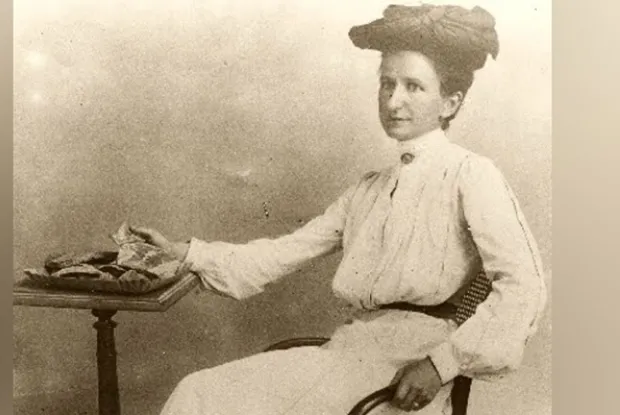
Fieldwork
Contact Archaeology Program
Hillyer Hall 102A
Smith College
Northampton, MA 01063
